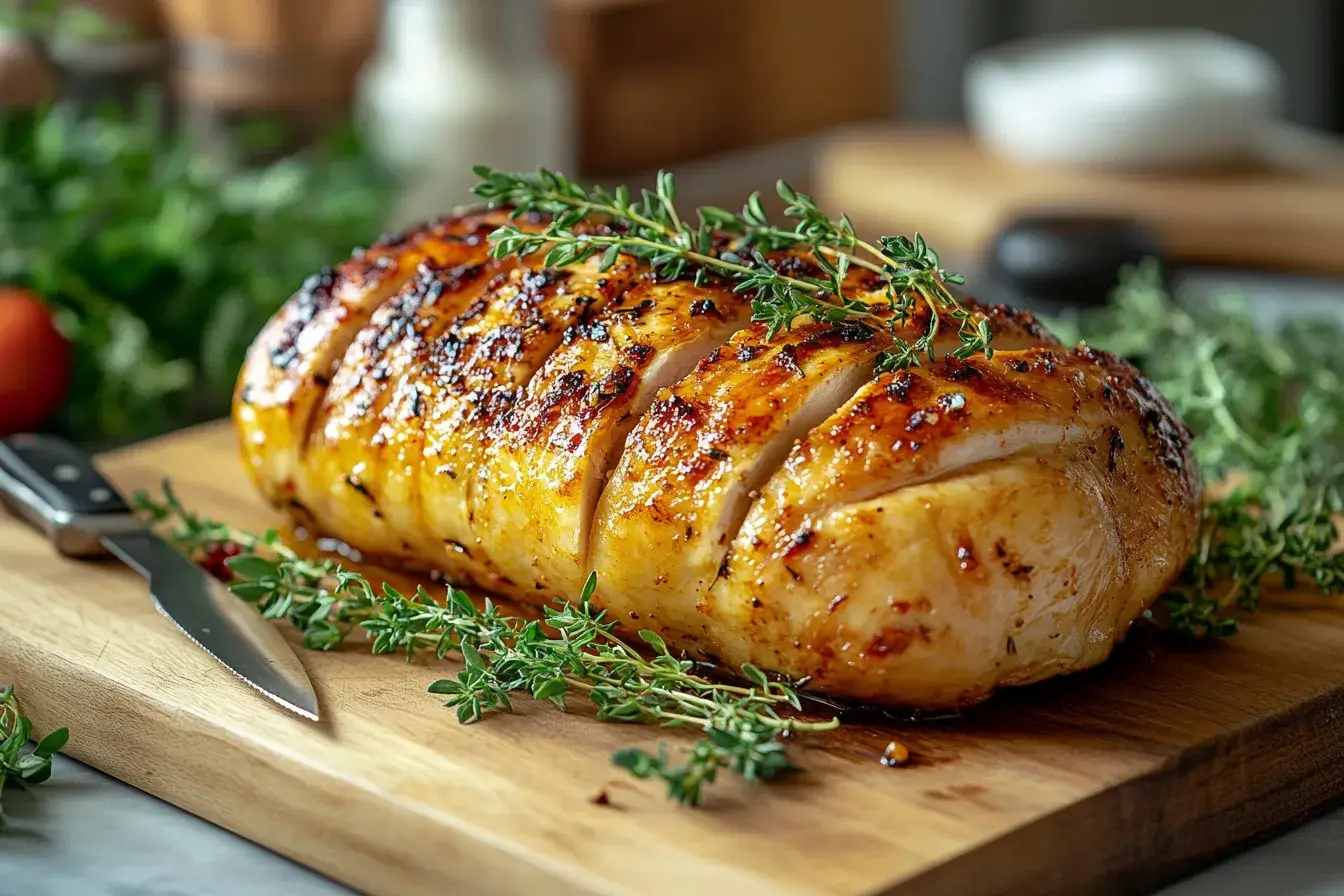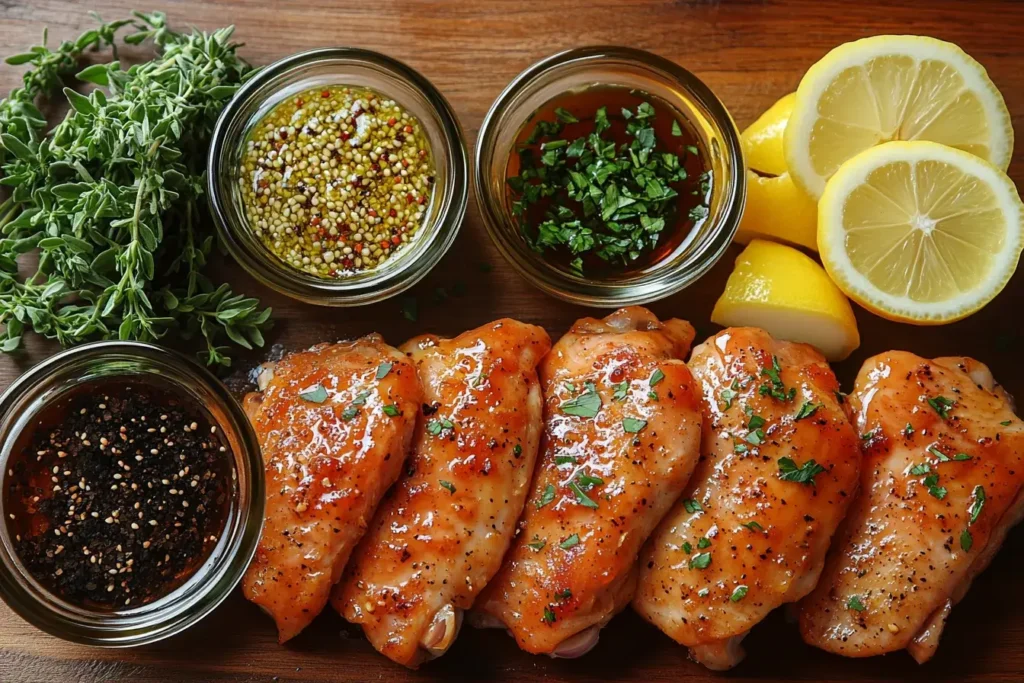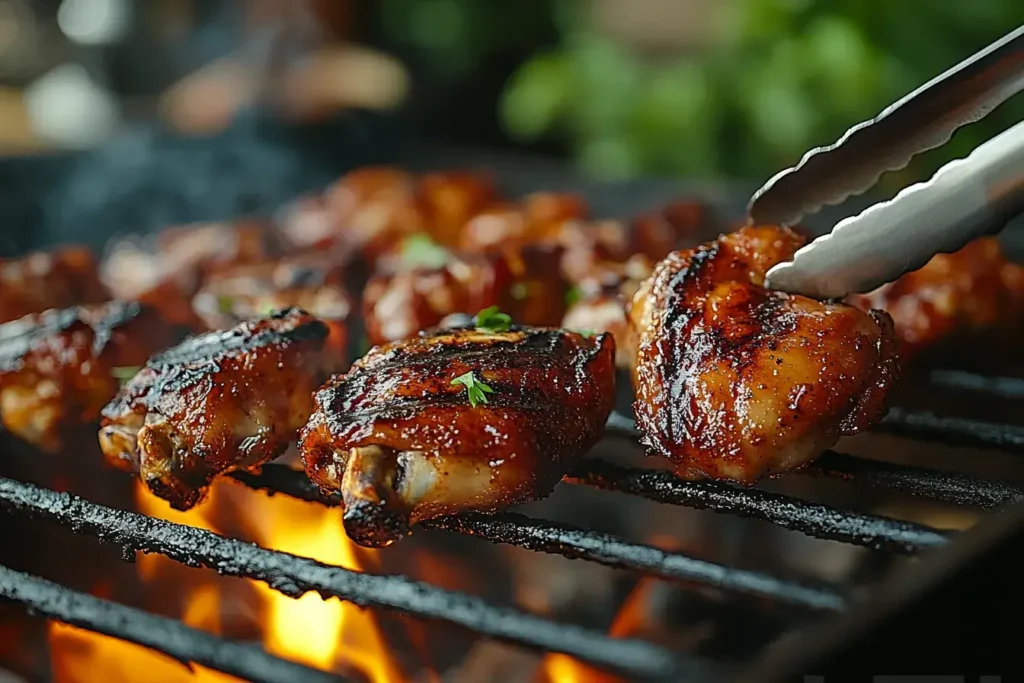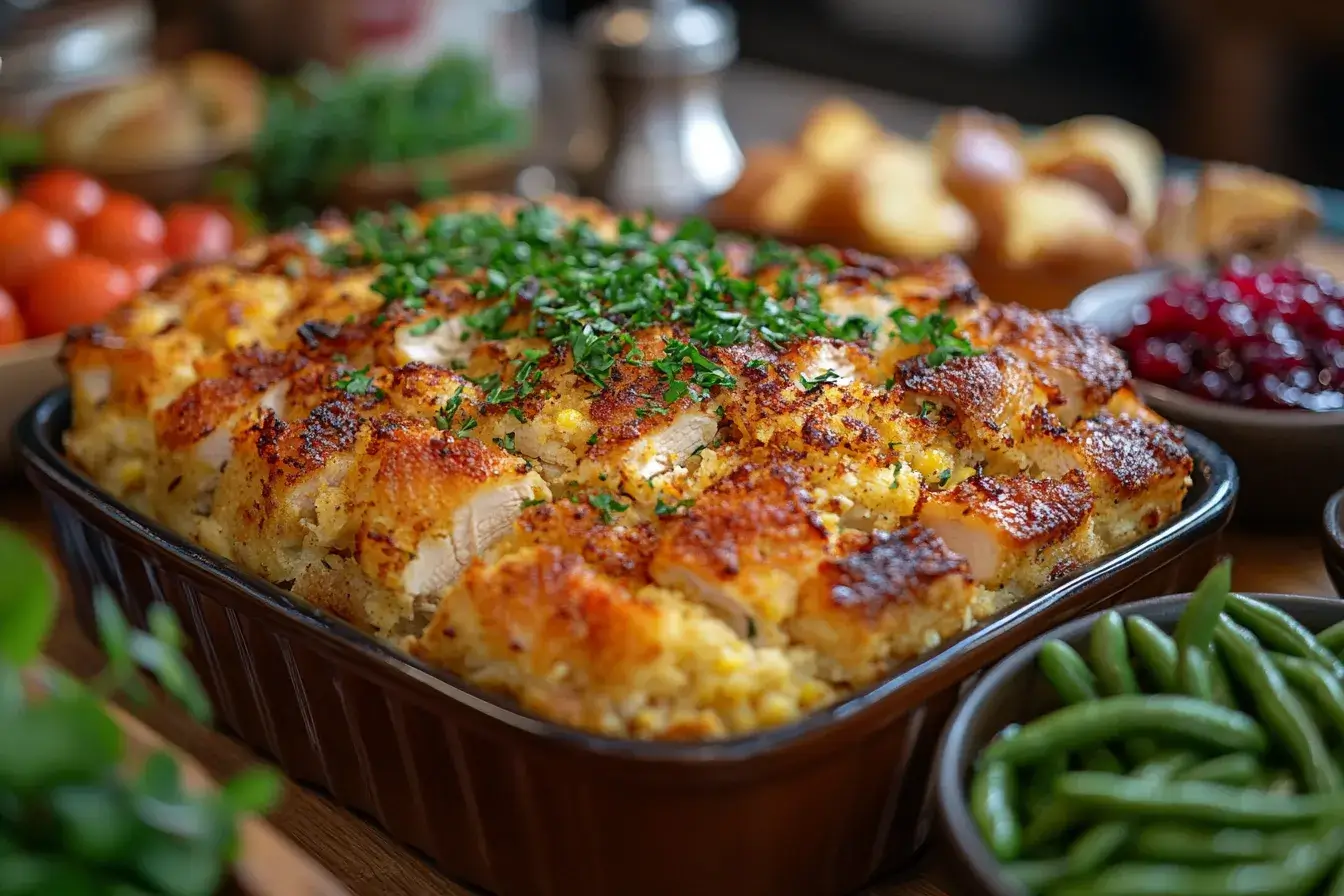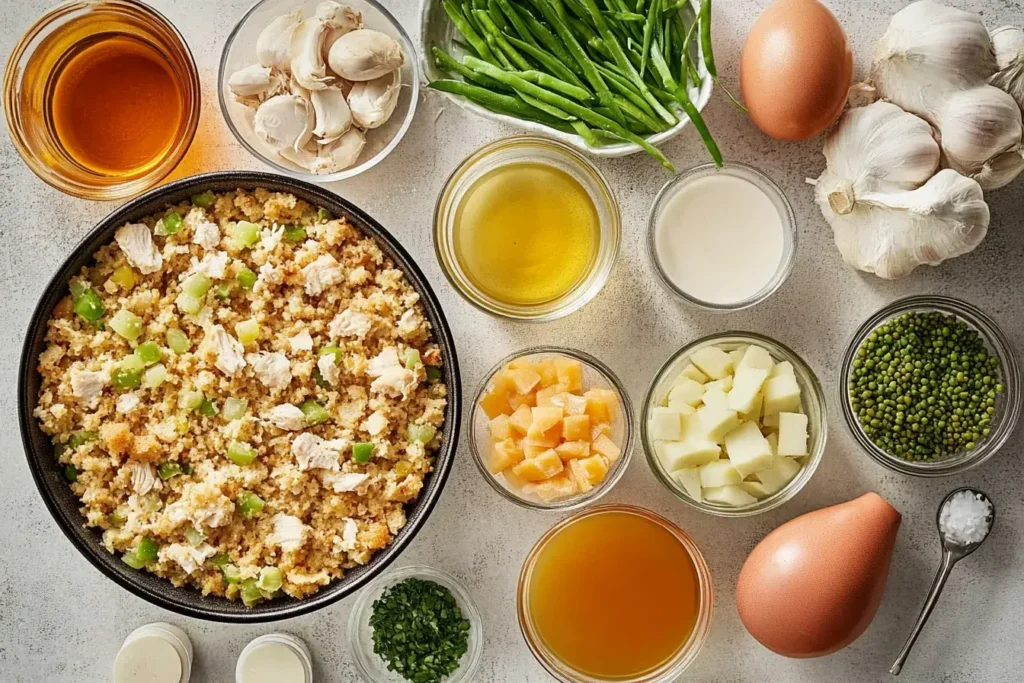Leftover rotisserie chicken is a convenient and tasty meal option, but the question is How long is leftover rotisserie chicken good in the fridge? In this article, we’ll explore everything you need to know about storing, reheating, and identifying spoiled chicken. From proper storage tips to expert guidelines, you’ll find practical advice to make the most of your leftovers without risking your health. Let’s dive into the nitty-gritty of keeping your rotisserie chicken fresh and flavorful.
Table of Contents
General Guidelines for Storing Leftover Rotisserie Chicken
Proper Storage Techniques
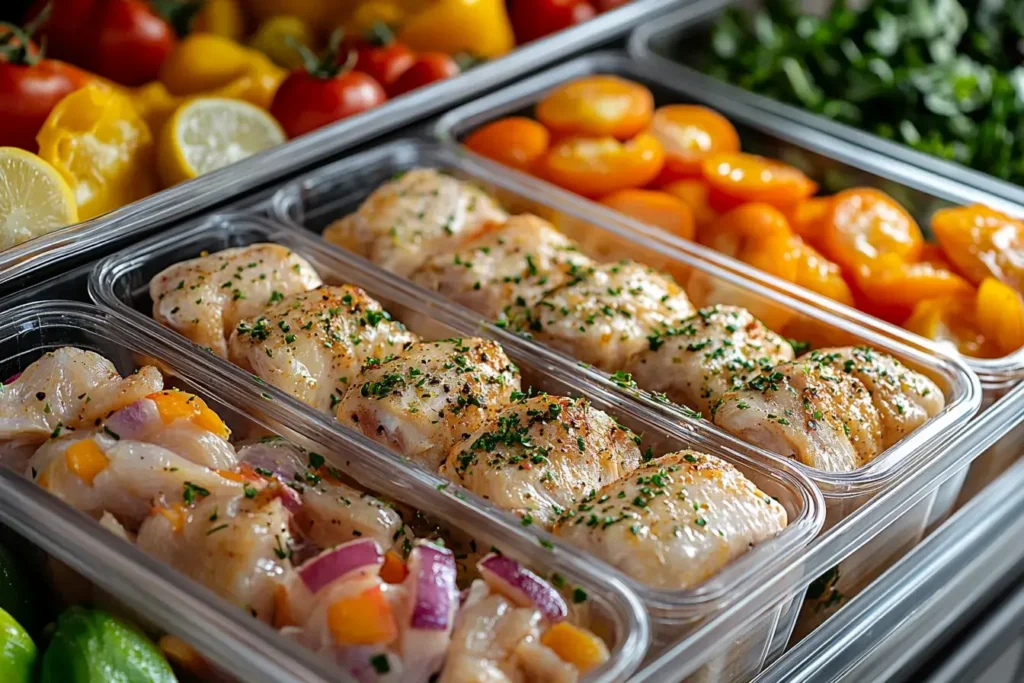
Storing leftover rotisserie chicken properly is the first and most crucial step in ensuring it stays safe and delicious to eat. Improper storage can lead to bacteria growth, foodborne illnesses, and loss of quality, so attention to detail is essential. To maintain freshness and retain its juicy texture, immediately transfer the chicken to an airtight container or tightly wrap it in aluminum foil or plastic wrap. Airtight storage not only prevents exposure to air, which can dry out the chicken, but also minimizes the chances of absorbing odors from other foods in your fridge. This extra layer of protection is key to keeping the flavors intact.
Timing is equally important. You should aim to refrigerate the chicken within two hours of cooking or purchasing. This time window significantly reduces the risk of bacterial growth, especially from harmful pathogens like Salmonella or Listeria, which thrive in the “danger zone” between 40°F (4°C) and 140°F (60°C). If the room temperature is unusually warm, such as during a summer picnic or BBQ, the safe window narrows to just one hour, making prompt refrigeration even more critical.
For those planning to use their leftover rotisserie chicken later in the week, dividing it into smaller portions before storing can be a game-changer. This ensures quicker cooling and makes reheating more convenient. Remember to place the container in the coldest part of the refrigerator, ideally on a lower shelf or in the back, where the temperature remains consistently cool. If you anticipate not using the chicken within three to four days, freezing it is a smart option. Properly frozen chicken can last up to four months, retaining both its flavor and texture when thawed correctly.
Recommended Timeframe for Keeping Rotisserie Chicken
The general rule of thumb is that rotisserie chicken is safe to eat for up to 3-4 days when stored in the refrigerator at or below 40°F (4°C). If you freeze it, the chicken can last for up to 4 months without significant quality loss. Beyond these timeframes, the chicken may start to spoil or lose its flavor.
Factors That Affect Longevity in the Fridge
Several factors influence how long leftover rotisserie chicken remains good in the fridge:
- Temperature fluctuations: Frequent opening of the fridge can cause temperature changes, accelerating spoilage.
- Original quality: If the chicken was fresh and well-cooked, it’s likely to last longer.
- Storage conditions: Airtight containers and proper refrigeration play a critical role in extending shelf life.
By following these storage practices will help you confidently answer the question, “How long is leftover rotisserie chicken good in the fridge?”
Identifying Signs of Spoiled Chicken
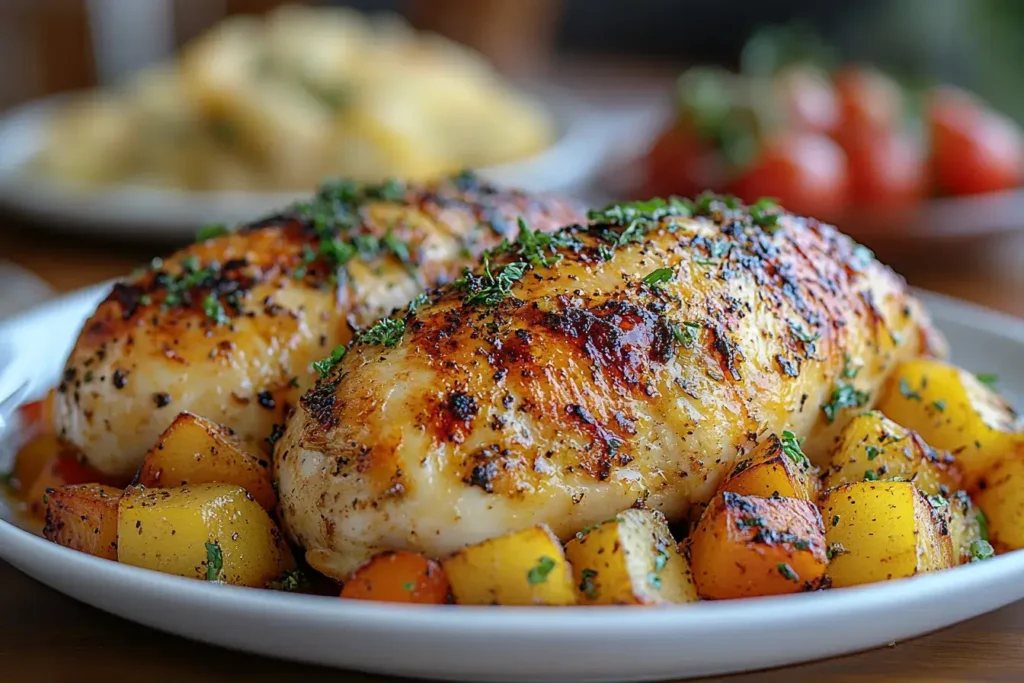
Common Indicators: Smell, Texture, and Color Changes
One of the biggest concerns with leftovers is determining if they’re still safe to eat. When it comes to rotisserie chicken, you’ll want to use your senses as your first line of defense. Spoiled chicken often emits a sour or unpleasant odor, which is one of the clearest signs that it’s no longer good. A fresh rotisserie chicken will have a mild, savory aroma. If the smell seems off rancid, sour, or even sweet in an unnatural way—don’t take any chances. It’s always better to discard questionable chicken than to risk foodborne illness.
Pay attention to the texture as well. Fresh chicken should feel firm and slightly moist, but if it’s slimy, sticky, or tacky to the touch, that’s a clear red flag. The slimy texture often results from bacterial growth, which makes the chicken unsafe to eat. When in doubt, use this simple rule: chicken should never feel slippery or overly greasy after it’s been stored.
Additionally, check for any discoloration. Freshly cooked chicken will have a golden-brown or light beige hue, but spoiled chicken can turn gray, green, or even develop black spots. These color changes signal that the chicken is decomposing due to bacterial or fungal activity. Visible mold—often appearing as fuzzy green, blue, or white patches—is another surefire indicator that the chicken has gone bad. If you see mold or unusual discoloration, it’s time to toss the chicken immediately.
Health Risks Associated with Consuming Spoiled Chicken
Eating spoiled chicken can lead to severe health issues. The bacteria that develop on rotten chicken, such as Salmonella or E. coli, can cause food poisoning, leading to symptoms like nausea, vomiting, diarrhea, and abdominal pain. Don’t let the temptation to avoid waste outweigh the potential health risks—if you’re in doubt, throw it out.
For more tips on how to use rotisserie chicken safely, you might want to explore creative recipes for leftover rotisserie chicken.
Expert Recommendations on Leftover Rotisserie Chicken Safety
Insights from Food Safety Experts
Food safety experts recommend adhering to the “two-hour rule” when storing cooked chicken. After two hours at room temperature, bacteria can grow rapidly, making the chicken unsafe to eat. If you’re planning to keep the leftovers, refrigerate them promptly in an airtight container. This simple step can prevent contamination and extend the freshness of your chicken.
For longer storage, freezing is your best bet. Experts agree that freezing chicken in tightly sealed bags or containers can preserve its quality for up to four months. When it’s time to thaw, use the refrigerator or microwave—never leave it on the counter.
USDA Guidelines for Refrigerated Chicken
The USDA provides clear guidelines for keeping cooked chicken safe in the fridge. According to their recommendations, cooked poultry, including rotisserie chicken, should be consumed within 3-4 days if refrigerated. These guidelines are designed to minimize the risk of foodborne illnesses caused by bacterial growth.
Incorporating these expert-backed practices will help you confidently answer the question, “How long is leftover rotisserie chicken good in the fridge?”
When you’re ready to reheat your chicken for a quick meal, you can also refer to step-by-step reheating tips to retain its flavor and texture.
How to Reheat Rotisserie Chicken Safely
Best Methods for Reheating
Reheating leftover rotisserie chicken might seem simple, but doing it correctly ensures it stays safe and tasty. The microwave is the quickest option, but be sure to cover the chicken with a microwave-safe lid to lock in moisture. Heat in short bursts, checking frequently to prevent drying out the meat.
If you prefer the oven, preheat to 350°F (175°C), wrap the chicken in foil to retain its juices, and heat for 15-20 minutes. This method evenly warms the chicken without overcooking it. For smaller portions, the stovetop works wonders—just toss the chicken in a skillet with a splash of broth or water to maintain its tenderness.
Want to get creative? Use leftover rotisserie chicken in soups or casseroles. Check out this spicy chicken soup recipe for an easy way to repurpose your leftovers.
Tips for Retaining Taste and Texture
To keep your reheated rotisserie chicken as delicious as day one, avoid overheating. Overcooking can lead to dry, rubbery meat. Always test the internal temperature—it should reach 165°F (74°C) to ensure safety without compromising quality.
When reheating a large amount, reheat only what you plan to eat immediately. Repeated reheating can degrade the flavor and texture over time.
FAQs About Leftover Rotisserie Chicken
Can I Eat Rotisserie Chicken After 5 Days?
While some may push the limits, experts strongly advise against consuming refrigerated rotisserie chicken beyond 4 days. After this point, the risk of harmful bacterial growth increases significantly. If you’re unsure, always err on the side of caution.
How Do I Know If Rotisserie Chicken Has Gone Bad?
Spoiled chicken gives off a sour odor, develops a slimy texture, or changes color. If you notice any of these signs, discard the chicken immediately. It’s better to be safe than sorry!
How Long Can a Costco Rotisserie Chicken Last in the Refrigerator?
Costco rotisserie chickens follow the same storage guidelines as others: 3-4 days in the fridge. However, their larger size may require dividing them into smaller portions for more effective cooling and storage.
Can You Refrigerate and Reheat Rotisserie Chicken?
Yes, you can refrigerate and reheat rotisserie chicken safely as long as you follow proper storage practices. Use airtight containers, refrigerate promptly, and always heat it to an internal temperature of 165°F (74°C) to kill any bacteria.
Can Rotisserie Chicken Be Left Out Overnight?
No, rotisserie chicken should not be left out overnight. Food left at room temperature for more than two hours (or one hour in warm conditions) can become unsafe to eat due to bacterial growth. Always refrigerate or freeze leftover chicken promptly.
For more delicious chicken recipes and ideas, explore our collection of chicken-based dishes. You’ll find creative ways to use up those leftovers while keeping things exciting!
Conclusion and Final Tips
Recap: Key Takeaways on Rotisserie Chicken Safety
By now, you should have a clear answer to the question, “How long is leftover rotisserie chicken good in the fridge?” Sticking to the recommended 3-4 day rule ensures that your leftovers stay safe to eat. Proper storage techniques—like using airtight containers and refrigerating promptly are essential for maintaining freshness.
Final Tips for Maximizing Shelf Life
To get the most out of your rotisserie chicken, plan your meals ahead. Divide the chicken into smaller portions and freeze any extras you won’t eat within a few days. When reheating, avoid overcooking to preserve both flavor and texture. And remember, always trust your senses when checking for spoilage.
For more recipes and storage tips, explore our leftover rotisserie chicken recipes. Whether it’s a hearty soup or a creative chicken dish, there are endless ways to enjoy your chicken while staying safe.
Common Myths About Rotisserie Chicken Storage
Myth 1: Rotisserie Chicken Can Be Left at Room Temperature Overnight
One of the most common misconceptions is that cooked chicken is fine to eat after sitting out all night. This is not true. According to food safety experts, leaving rotisserie chicken at room temperature for more than two hours creates the perfect environment for bacteria like Salmonella and Staphylococcus aureus to thrive. Always refrigerate your chicken promptly to ensure it stays safe to eat.
Myth 2: Freezing Chicken Kills All Bacteria
While freezing halts bacterial growth, it doesn’t kill the bacteria already present. If your rotisserie chicken wasn’t stored correctly before freezing, it could still be unsafe to eat once thawed. Freezing works best when the chicken is stored within two hours of cooking and in airtight containers or freezer bags. This preserves its quality and safety.
Myth 3: Smell Is the Only Reliable Sign of Spoilage
While a bad smell is a strong indicator of spoilage, it’s not the only one. Changes in texture and color, like a slimy feel or a greenish tint, can also mean the chicken is no longer safe to eat. So, use all your senses when assessing your leftovers.
To avoid any doubts about how long is leftover rotisserie chicken good in the fridge, follow best practices for storage and reheating.
Creative Uses for Leftover Rotisserie Chicken
Transforming Leftovers Into New Dishes
Got leftover chicken that needs a second life? Rotisserie chicken is incredibly versatile, making it a great base for countless recipes. Chop it up for salads, shred it for tacos, or mix it into pasta dishes. These options not only reduce food waste but also make meal prep quick and easy.
For a cozy dinner, try a classic chicken pot pie or a creamy chicken Alfredo. Leftover chicken also works beautifully in soups, like this spicy chicken soup recipe, which adds warmth to chilly nights.
Storing and Preparing for Future Use
If you’ve got more chicken than you can use in a few days, freezing is the way to go. Divide the meat into meal-sized portions and store them in freezer-safe bags. Label the bags with the date for easy tracking, and use within four months for the best quality.

